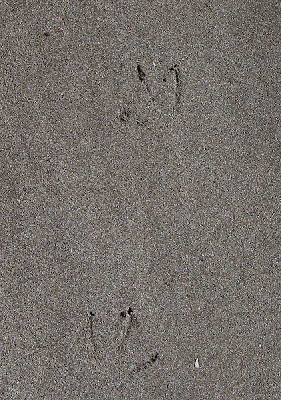We didn't go out in the car today (it being Sunday everywhere is closed, of course) but who needs to travel with a view like that (and weather to match).


In the late afternoon GB and I went for a stroll down to the beach. On the croft a little insect larva was wandering across a piece of paper. The only piece of paper on the whole croft and the insect decided to make itself obvious by crawling over it. How silly is that? It does make you wonder how many millions of insects and other invertebrates are hidden away in the grasses and rushes as you pass by.

These are some views from lower down Iain and Carol's croft. Are there any better views on the island?




Among the many flowers on the croft is a bedstraw (Galium sp.) but I cannot identify which species. The leaves seem the wrong shape for Heath Bedstraw. The bedstraws got their common name from the fact that their soft, sweet smelling foliage was picked and stuffed into mattresses.

I had timed the walk to be at low tide - the tide tables being in the Stornoway Gazette and tides here being pretty much the same as at Stornoway. It may seem obvious that the tides here coincide with Stornoway since we are only a few miles away but on the Lleyn a difference of eight miles could make a difference of five hours.

There are Marsh Marigolds and Yellow Flag Iris in the stream bed where it arrives at the shore.

GB photographing the terns.


We are not the first to walk on the sand since the tide went out.......


This is the shell-like structure created by a tubeworm, on the back of a Blue-rayed Limpet. Because the tubes often occur in large numbers and persist long after the death of the worm they can cause serious problems on ships hulls. They increase the drag of water, reducing the efficiency of the propellers. They can also block water inlet pipes and prevent sluice gates from opening or closing properly.

I use "Collins Pocket Guide to the Seashore" as my main reference work for the beach but one Order for which it does not match up to my other books (which are all at home) is the Deacpods (Prawns, shrimps, crabs and the like) and I have a lot of difficulty identifying prawns and shrimps at the best of times. Nevertheless, I think these are Brown Shrimps (Crangon crangon).


As always there were some dead crabs on the shore - usually with the footprints of gulls around them. On the right is a Green Shore Crab (Carcinus maenus) and on the left an Edible Crab (Cancer pagurus) which can be recognised by the pie crust edging to its shell.

Dead seabirds also get washed up on the shore quite often and today there was a Cormorant. I shall spare you the corpse but the opportunity to take a close-up of the long and vicious beak was too good to miss.

While GB was photographing a Common Tern with its catch in its beak a Great Skua came in and tried to take the fish. Outside the breeding season Skuas take fish, offal and carrion. Great Skuas, known locally as Bonxies, are also kleptoparasites, chasing gulls, terns and other seabirds to steal their catches. They also regularly kill and eat adult birds, even up to the size of Great Black-backed Gulls. On the breeding grounds they commonly eat the eggs and young of other birds.



On the way back up the croft GB saw a Common Blue butterfly fly past and spotted a Broad-leaved Marsh Orchid. While photographing the latter I also took the seedhead of a Bogbean.


No comments:
Post a Comment
Welcome - comments are nearly always appreciated (the exception being those that simply advertise which don't make it past my moderation so please, don't bother).